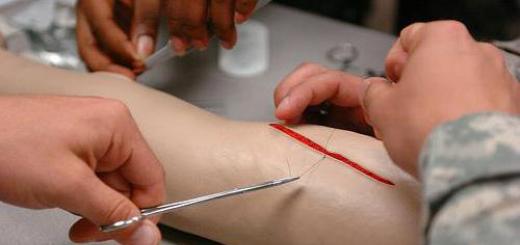Every housewife has to face the problem of creating a menu. Everyone knows that buying groceries every day is a very expensive procedure. At the same time, you can easily gain a lot of extra food in the supermarket. Of course, this will eventually impact the budget.
But before heading to the store, it's important to make a comprehensive grocery list. For this we need a menu layout. Having mastered this skill, you will greatly facilitate the task of allocating finances and optimizing nutrition. Having spent several hours once, you will get rid of painful discussions about what to cook for lunch. It will be enough to open ready-made diagrams and select one or two recipes from them.
Used by
Menu layout is widely used in all industries: canteens and buffets, snack bars and kindergartens. Each housewife can create a menu for the coming week. This is also what the menu layout is used for. Another area of practical application is hiking. It is extremely important to bring enough food to feed the group.
The menu layout makes it possible to plan the dishes that will be prepared. Accordingly, it will be possible to calculate the number of products needed for each of them. As a result, it will be possible to make a general calculation.

Diet
This is the first thing you will need to consider when creating your menu layout. A proper diet contributes to the normal development of a child and improves human health. It is usually recommended to eat 4-5 times a day. For a small child and a sick person, these numbers change. But this is not the only requirement that must be met.
- Human nutritional needs. It changes during the day, this must be remembered if you are creating a set lunch menu or a daily menu.
- Number of people eating.
- Taste preferences.
- Age characteristics.
- The cost of each meal.
As a result of the work done, you will get a balanced, optimal diet. The menu layout will allow you to make a list of products that you will need and describe the recipes used. Housewives note that such work makes the task of preparing food for the family much easier. If this concerns a canteen or cafe technologist, then such planning is simply necessary.

Composition and layout of products using a simplified method
Let's start with the menu. Arranging dishes according to their components begins with the fact that you must come up with what you will cook. It is recommended to create a cycle for 5-7 days; there is no point in making more options to diversify the menu even more. You can immediately set aside holidays and especially significant days, the menu on which will be especially colorful.
Now you need to take the food standards per person and multiply by the number of people. All that remains is to calculate how many times the same menu option will be repeated over a certain period of time. This way you will determine the amount of products needed.
As a result of the work done, you have everything to prepare the selected dishes and a ready-made recipe. This means that all that remains is to sort the selected recipes into categories: breakfast, lunch, dinner.

Sample breakfast layout
Let's say we have to cook for a small group of four people. In this case, we will plan the menu for 6 days. To do this, you need to plan a meal layout for three days. The menu will be repeated twice during this time.
You can plan lunch or dinner using this principle. A sample menu layout will make this process somewhat easier.

We will carry out procurement
Now you need to determine how much food you need to prepare to feed four people for six days. To do this you will need:
- Buckwheat - 800 g.
- Rice - 800 g.
- Oatmeal - 800 g.
- Meat - 480 g.
- Vegetables - 160 g.
- Sausage - 640 g.
- Butter - 120 g.
- Cheese - 100 g.
- Bread - 1 kg.
- Tea - 40 g.
- Cocoa - 80 g.
- Sugar - 240 g.
- Condensed cream - 320 g.
- Salt - 80 g.
- Spices - 16 g.
From this it is already possible to calculate the costs required to purchase all menu components. Now mistakes are eliminated when an excessive amount of cereals or oil is purchased to the detriment of truly necessary products.

Layout according to all rules
So far we have considered a simplified version. Every housewife can use it in her kitchen. Creating a menu layout for catering requires a more detailed analysis of the components of the dishes. The main difference is that in this case you will have to not only take into account food standards, but also strictly maintain calorie content, weight and the ratio of fats, proteins and carbohydrates. Most often, special programs are used for this, which independently adjust the menu for each day.
What will it take?
You can’t do without special tables, because you need initial data about what substances are contained in a particular product. Therefore you will need:
- food calorie table;
- calculator;
- kitchen scales;
- notebook.
Therefore, to create the right menu, you need to use only the healthiest products. They must fuel the body with the necessary substances. At the same time, the dishes should be tasty and look appetizing. The ratio of proteins, fats and carbohydrates should be 1:1:4. This is exactly the ratio that is necessary for normal human life.
Be sure to format the layout you created in the form of a table. Excel is suitable for this. You will need to create several columns: dish, set of products, calorie content and nutrients contained per serving. Since it can be used for a long time, it is best to take thick paper or laminate it.

Breakfast menu
It must be light. Avoid excess consumption of fats and carbohydrates. They lead to a sharp increase in blood sugar. As a result, a surge of activity is replaced by fatigue and drowsiness. The morning meal should not be skipped. But you shouldn't eat too much. In this case, a strong feeling of hunger will awaken closer to lunch.
When creating a menu layout, you need to take into account that the morning meal should account for about 25% of the daily diet. When calculating, you need to focus on your height and weight, as well as your lifestyle. It is best to opt for porridge with fruits and nuts. Be sure to accustom yourself to a second breakfast, which is best to include fruit.
Dinner menu
Nutritionists warn against eating too much in the evening. It’s good if dinner consists of low-calorie and easily digestible dishes. Include poultry and fish, vegetables and fruits, and low-fat dairy products in your evening diet. The exception is the restaurant. The menu layout here is based on the fact that most often people come here to have a delicious dinner.
How to diversify the menu
The main tool will be the prepared menu layout. You need to prepare 3-7 options for the day so that you can choose the one that will be good for today. In addition, you can replace rice with barley, chicken with fish. In the same way, you can replace vegetables and fruits and drinks. This way you will increase variability without having to completely redo the whole job. By adding different desserts, you can brighten up even a frequently repeated menu.
Instead of a conclusion
Today there are many programs that can make this task easier. Special calculators already include the content of nutrients in a particular product per 100 g. All you have to do is select the appropriate dishes and arrange them according to the days of the week, as well as for different meals. If the program does not perform the final calculation, then this must be done manually.
At the Department of General Hygiene and Ecology of YSMU
For II and III year students
Faculty of Medicine and Pediatrics
For 2015-16 – 2016-17 academic years.
General provisions
This regulation determines the procedure for assessing the educational achievements of 2nd and 3rd year students of the Faculty of Medicine and Pediatrics in the discipline “Hygiene”.
Students' knowledge is assessed during current, midterm control and intermediate certification.
Current control
Elements of ongoing control are: oral questioning, current assignments in test form, laboratory classes on the topics being studied; writing an act of sanitary and hygienic inspection of various objects, drawing up a menu layout, writing a “Health Card”, assessing the individual and group physical development of children and adolescents, attending and taking notes on lectures on the subject.
Oral response score:
An oral response includes an interview in class and/or solving a situational problem. For the purpose of objectivity of assessment for an oral answer, points are awarded based on the following criteria:
0 points– refusal to answer the question posed or the student demonstrates complete ignorance of the educational material
1 point– a very large part of the material has not been mastered, there are only separate ideas about the material being studied, in the answer he makes a large number of gross errors
2 points– most of the material has not been mastered, there are separate ideas about the material being studied, gross errors are made in the answer
3 points– the student cannot clearly answer the question posed, has difficulty in reproducing it independently and requires additional questions from the teacher, while making a large number of gross mistakes in the answers
4 points– the student knows the material studied, answers questions without difficulty, does not make gross mistakes, eliminates individual inaccuracies with the help of additional questions
5 points– the student demonstrates complete assimilation of the entire volume of program material, identifies the main points in the material being studied, does not find it difficult to answer the questions posed, freely applies the acquired knowledge in practice, and does not make mistakes in reproducing what has been learned
In the academic year, each student must be interviewed for at least 30% of the number of practical classes.
Evaluation of lecture attendance
Attending and having a “mark” in the journal indicating the absence of current debt on lectures is strictly mandatory to obtain admission to the exam.
The data is recorded on page 4 of the training journal.
Assessment of current control in test form
A total of 4 ongoing controls are carried out in test form. Rating points are calculated according to Table 1.
Table 1
Number of points awarded
For current control in test form
Evaluation of the survey report
During their studies, students carry out a sanitary and hygienic assessment of a medical institution (hospital), places of residence (block) and at the pediatric faculty - educational institution (school), which are drawn up in writing in accordance with the requirements for the preparation of printed documents and defended orally. The maximum number of points for each examination report is 10 points (5 points each for registration and oral response), a total of 20 points at the medical faculty and 30 at the pediatric faculty. A completed sanitary and hygienic inspection report that is not submitted on time is assessed 0 points for the written part and is subject to mandatory completion. In this case, the points scored the first time are included in the rating.
Assessment of the menu layout of the daily diet
The menu layout of the daily diet for an adult or child is drawn up in writing. The maximum number of points is 5. A completed menu layout that is not submitted on time is scored 0 points and is subject to mandatory completion. In this case, the points scored the first time are included in the rating.
Health Card Assessment
The “health card” is written based on the results of the patient’s supervision at the Health Center (in this case, the student supervises himself after visiting the Yaroslavl Regional Health Center). The maximum number of points is 5. A completed “Health Card” that is not submitted on time is assessed as 0 points and is subject to mandatory completion. In this case, the points scored the first time are included in the rating.
Frontier control
Midterm control is a form of assessing the acquisition of theoretical knowledge and practical skills upon completion of a disciplinary module. Midterm control is carried out in the form of control testing.
A total of 5 milestone control classes are conducted.
Students who have current debt for a given module are not allowed to take part in the midterm control: unworked missed practical classes, no grades at all (if all classes in a given module are closed with donor certificates) and only unsatisfactory grades for the current module (0, 1, 2 points for an oral answer and 5 or less points for the current test control).
The milestone control of knowledge when studying “Hygiene” is solving tasks in test form at the end of the module. There are 20 tasks, each of which is worth 1 point.
The test is considered failed if you score less than 12 points and is subject to mandatory retake, while the points scored the first time and received during practice are included in the rating.
Failure to appear for a midterm test without a good reason is assessed as 0 points and is subject to mandatory retake, while the points scored the first time and points for working out are included in the rating.
In case of not being admitted to the midterm control without a good reason (missing practical classes without certificates and having only negative marks), the midterm control written after working off the current debt is assessed at a maximum of 12 points.
Points when completing a milestone control missed for a good reason (including a donor certificate), as well as after liquidation of the current debt for a good reason, are awarded on a general basis in full.
For cheating and attempting to cheat, as well as if a student is found to have data transmission devices, the student is removed from the test with a score of “zero” points with a mandatory retake without the right to receive additional points.
Sofia: | April 8th, 2018 | 10:33 am
In general, the norm is different for everyone) I’m used to eating a little bit regularly, every 2 hours. I have lunch and dinner at home, taking with me a container with chicken and side dish, a couple of Turboslim protein bars, apples, banana, nuts, etc. In general, I don’t like to go hungry))
Answer: Sofia, thanks for your comment!
Olya: | October 15th, 2015 | 1:11 pm
The menu is not bad, although if you have a sedentary lifestyle, you can get fat on it. But why sweeten all your baby food? If black tea is too tart for a child, there are rosehip, chamomile, hibiscus, raspberry, and herbal teas for children. And a fresh apple is better than boiled compote.
Answer: Olya, this menu is given as an example. It can be varied at your discretion. By the way, on the day when you have compote for lunch, you have a fresh apple for second breakfast :)
Vera: | March 5th, 2012 | 4:39 pm
But it seems to me that nothing here is overpriced. If you look closely, you can see that the plates are small and you definitely can’t fit much there. Respect to the author! Interesting menu, varied and not at all complicated))
Answer: I also have one specially compiled from very economical recipes. So the portions there are about the same, but the reaction of commentators is the opposite: “It’s too little and you’re hungry :)”
Dara: | February 10th, 2012 | 1:33 pm
In my opinion, the portions are meager and are compensated only by the frequency. 8 grams of cheese – excuse me, what? Can you imagine a triangle of processed cheese? 8 grams is half of such a triangle.
Fruits per day (not counting compote) – 150 grams. This is one tangerine. An average-sized apple weighs 250 grams. By the way, why are there 2 fruits in the pictures if the list contains 150 grams?..
Answer: I wrote that the table itself is not mine. But as far as I can see, its compilers calculated the weight of one apple as 100 g and one tangerine as 50 g.
Olli: | January 30th, 2012 | 4:09 am
Girls, you are calculating net weight without taking into account either volume or calorie content. Believe me, when you put everything listed on your plates, you will immediately understand that these are absolutely normal portions for a healthy, working woman who does not follow a special diet. Very useful table. Thank you.
Answer: in my opinion, there is also not much food. When I write down recipes, I use a kitchen scale and I know that the average weight of 1 potato/apple/tomato/carrot is about 100 g. If for dinner there are 700 g of food, the lion's share of which is liquid (soup and tea), then solid food There are 300 grams left there.
Lena: | January 29th, 2012 | 9:02 pm
I'll add my voice to complete the statistics. In my (I agree, subjective) opinion, the volumes are twice as high, even though I love to eat. For breakfast, either porridge or scrambled eggs is enough. For lunch we usually have either the first course with salad or the second course with salad. (We never drink compote with compote). In between - either an afternoon snack or a second breakfast. Usually my body encounters such six meals a day in different boarding houses, etc. and reacts extremely negatively - it’s hard to endure such volumes and so often that you don’t have time to get hungry. It seems to me that these are the immediate post-war norms, when the main task was to “fatten”, and the main criterion for relaxation in a children’s camp was how much weight the child gained in a month.
Answer: Everyone has their own needs. For me, these are quite normal portions. But I admit that some need more, and some need less.
Irina: | January 29th, 2012 | 5:40 pm
My nutritional allowance for one meal is 350g of food. It also seems to me that it is too much in volume.
Hope: | January 29th, 2012 | 11:44 am
It seems to me that these standards are very high. According to this sign, I get 750 grams of food for lunch! Yes, I won’t eat that much even if I’m hungry. My child also eats half as much, while his height/weight is near the upper limit of normal. Even my husband... except that he fulfills the quota for meat =)
Classification of sanitary factors, methods of their research, descriptive methods in hygiene.
All existing sanitary factors are divided into 2 groups:
1. Natural factors (or factors that exist independently of human activity): climatic conditions in places of residence; reservoirs and water sources in places of residence; fauna in places of residence; flora in places of residence; presence of minerals; gender; biological age; heredity; race.
2. Social factors: nature of nutrition; food quality; living conditions; medical service; education; conditions for children's education in schools.
Methods of their research:
· Physical methods. They are used to determine temperature, humidity, air speed, barometric pressure, vibration, etc.
· Chemical methods. Used to study the chemical composition of air, water, soil, food, etc.
· Statistical methods
Microbiological methods
· Descriptive methods: organoleptic description (a method that allows you to give a hygienic assessment based on the senses); sanitary description; sanitary-topographic description; medical-geographical description.
Health, define, indicators of individual and mass health. Health levels.
Health (as defined by WHO) is a state of complete physical, mental and social well-being, and not just the absence of disease and physical defects.
Individual health indicators:
· indicators of physical development (height while sitting, standing, EU, chest circumference, etc.)
clinical manifestations of the disease
· cause of illness.
Mass health indicators:
· sanitary-geographical indicators (fertility, mortality)
· morbidity rates
· injury rates
· disability indicators.
There are 4 levels of health study:
individual health
· health of small and ethnic groups - group health
· health of the population living in a specific administrative-territorial unit (region, city, district, etc.)
· public health - the health of the population of a country, a continent, the whole world.
Food hygiene is a section of hygienic science, tasks. Physiological and hygienic significance of nutrition.
Food hygiene is a section of hygienic science that develops the foundations of rational healthy nutrition for the population. Food hygiene studies the conditions and results of the influence of biological, chemical and physical factors on food and develops hygienic measures to ensure the nutritional value of food.
Objectives: determining the norm of physical need for nutrients; development of requirements for the quality of food products; regulation of measures for sanitary and epidemiological examination of products; development of recommendations for the use of various groups of substances depending on age, socio-geographical and environmental factors, diet and nutritional conditions.
Rational nutrition, basic hygiene requirements. Menu layout, its hygienic characteristics.
Rational nutrition is nutrition that is complete in quantitative and qualitative terms, which, along with other environmental factors, ensures optimal development of the body, endurance, performance, and resistance to external factors. The basis of rational nutrition is the principle of balanced food. A balanced diet provides for optimal quantitative and qualitative relationships between the main nutrients: proteins, fats, carbohydrates, vitamins and minerals; it must contain substances that are not synthesized in the body. The energy value of food is important: a decrease in a person’s physical activity leads to a decrease in energy consumption, and therefore to a decrease in food consumption and vice versa. It is important to determine the optimal ratios of individual nutrients for absorption.
Basic hygienic requirements for food:
· The daily ration should cover energy costs
The chemical structure of food must correspond to the enzyme systems of the body
· The diet should be properly distributed throughout the day
· Food products must be impeccable in sanitary and epidemiological conditions. respect.
Evaluation of menu layout.
Using tables, the following indicators characterizing the nutritional value of the diet are calculated:
1. Energy value of the daily diet and its compliance with energy consumption
2. Qualitative composition of the diet
The total amount of proteins, its compliance with standards, the ratio of animal and plant proteins.
3. Diet: Frequency of meals
Distribution of energy value of nutrients by
individual meals
Related information.
Food layout is a nutrition plan for personnel, usually for a week, drawn up by the head of the food service together with the head of the medical service, the head
canteen and instructor-cook (senior cook), signed
deputy unit commander for logistics, heads of food and medical services and approved by the commander of the military unit.
It is prohibited to make changes to the layout without written permission from the unit commander.
When compiling a food layout, the features and nature of combat training, the physical and psychological stress on military personnel, as well as the established diet, which determines the number and time of meals during the day, and also provides for the rational distribution of products among individual meals, are taken into account first of all. and the most appropriate intervals between doses.
In addition, you need to consider:
Availability and range of products available at the food warehouse;
The ration norm established for a given contingent of military personnel;
Possibility of using farm products for additional nutrition;
Cooking qualifications;
Equipped with technological and refrigeration equipment;
Wishes and requests of those who eat.
The layout of products should be approached creatively and thoughtfully, and this requires knowledge of physiology and food hygiene, as well as food preparation technology.
The product layout is prepared in triplicate. The first copy (original) is stored in the food service office and is the basis for issuing products from the warehouse to the canteen; the second is posted at the entrance to the dining room to familiarize those eating, the third is given to the hot shop for guidance in preparing food and putting food into the cauldron.
When determining the calculated yield of the second dish, its total mass is shown in the food layout, i.e. a meat or fish portion together with a side dish and sauce, and a separate mass of meat and fish.
When household products or products purchased from the military unit's monetary fund are spent on additional food for personnel, in the food layout they are shown in a separate column separately for breakfast, lunch and dinner.
In order to diversify the diet, it is allowed to replace some products with others when preparing layouts in accordance with the replacement standards.
Rations for three meals a day are distributed according to energy value as follows: for breakfast - 30-35%, lunch - 40-45% and dinner 25-30%.
Depending on the conditions of combat training and the daily routine of the military unit, the distribution of rations can be changed by the unit commander.
The role of the head of the medical service in drawing up the layout is to ensure that all the above requirements are met, so that the range of planned dishes meets the technological capabilities of the dining room and the qualifications of the cooks. It is impossible, for example, to plan the preparation of cutlets without the presence of a cutlet machine, dishes the preparation of which is prohibited for some period of time due to epidemic indications. It is necessary that the name of the dish corresponds to its culinary content; for example, you cannot plan borscht without having beets in stock, etc. Attention is drawn to the physiological and hygienic equivalence of product replacement. The doctor controls the distribution of the daily ration among meals, based on the combat training plan for the planned period.
The complete nutrition of military personnel is achieved by a variety of prepared food, especially cold appetizers, meat and fish dishes, their skillful selection, without repeating the same dishes more than twice a week, except for potato dishes, as well as by using various methods of culinary processing of products.
Every day for lunch you should plan to prepare cold snacks that stimulate the appetite, promote the secretion of gastric juice and better absorption of food, and also enrich the daily diet with vitamins.
Analysis of the food layout involves viewing the names of dishes during the day and week in order to identify their unacceptable repetition, compliance with ration standards during the day, and on average for the week (must correspond to the standard of general military or other rations) and the equivalence of replacement of products, as well as the calculated determination of tables of protein, fat, carbohydrate content, energy value, vitamins, mineral compounds
lei, their rational distribution throughout the day and balance among themselves. The volume of such analysis of the layout is carried out at the discretion of the head of the medical service, but at least once a month, and it is advisable to take samples of prepared food for laboratory research.
Medical control over the physiological nutritional value includes control over its quantitative and qualitative aspects.
Food rations of the RF Armed Forces are developed taking into account scientifically based physiological nutritional standards and the economic capabilities of the state. It is not always possible to achieve complete harmony between these two parties.
When developing food rations, energy costs and the need for one or another ingredient are taken into account, adjusted for the specifics of the work of individual military contingents (flight rations, underwater rations, etc.).
To evaluate a ration from a physiological and hygienic point of view means to compare its energy value, chemical composition and balance of nutrients with physiological nutritional standards and hygienic recommendations for the population of the corresponding group of labor intensity, gender, and the climatic and geographical characteristics of the region of residence.
The work of military personnel is conditionally classified as intensity group IV according to the recommendations of the Institute of Nutrition of the Russian Academy of Medical Sciences, which are approved and approved by the Ministry of Health of the Russian Federation (Table 10). The energy requirement for this group (age 18-29 years) is 15480 kJ, protein - 102 g, of which 56 g of animal origin, fats 136 g, of which one third are vegetable, carbohydrates 518 g, vitamins: A 1 mg, B1 - 2.2 mg, B2 - 2.6 mg, B6 - 2.6 mg, PP - 24 mg , C - 92 mg; microelements: calcium 1 - 1.2 g, magnesium 0.3 - 0.5 g, phosphorus 1.2 g, sodium - 4-5 g. The recommended ratio between proteins, fats and carbohydrates is 1: 1, 3: 5, and calcium-phosphorus 1:1, calcium-magnesium 1:0.5. Knowing the content of these ingredients in food rations and comparing each of them with the recommended values, one can give a physiological and hygienic assessment of the ration.
Control over the quantitative side is based on the law of energy adequacy of nutrition and is aimed at studying the energy expenditure of military personnel and the energy content of the diet.
Currently, the entire population of the country is divided into five groups according to labor intensity. The first group includes workers primarily in mental labor, the second group includes those engaged in light physical labor, the third group includes those engaged in moderate physical labor, the fourth group includes heavy physical labor, and the fifth group includes particularly hard labor.










